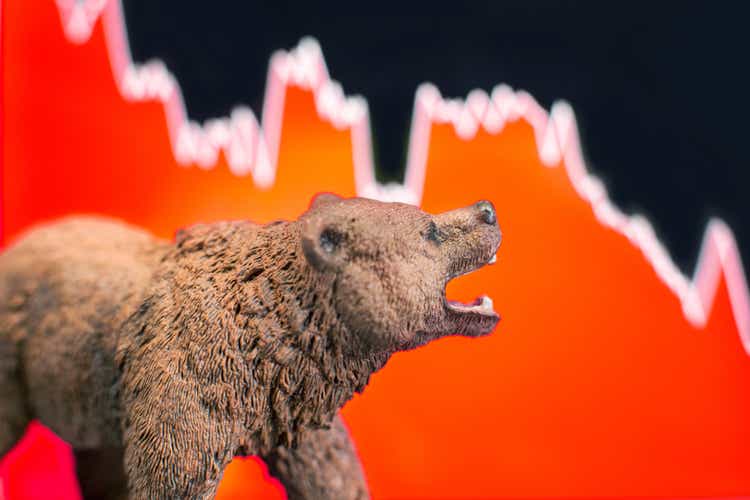24K-Production/iStock via Getty Images
The post-pandemic US stock market rally is over. The S&P 500 finished Monday sharply lower, finally breaking through the down 20% bear market barrier to close 21.8% off its January 3, 2022 all-time high.
Bear markets are momentous. Not necessarily because of the investing implications of being down exactly more than 20%. After all, what really is the difference between 20% and 19.8%? (See Dec. 2018.) They are, however, very symbolic. Markets are once again going through a material contraction, for all the short-term challenges and long-term opportunities that one provides.
The significance isn’t just what is happening on the stock market side. Inflation’s furious return is roiling bond markets. So much so, that bonds are not providing the same degree of downside protection they have historically. This is unusual. As of Friday, June 10th, the US and Global bond market aggregates are each down 11% and 14% year-to-date, respectively.
The culprit? Rising interest rates. As bond yields rise, bond prices fall – and the historically sharp rate rise over the past year has left many investors wondering ‘Why own bonds?’. The answer is two-fold.
The Long and Short of It
The adage of buying low and selling high isn’t just for stocks. Yes, the past year has been a painful reset period, but with that in the past, today’s reset to higher yields creates a better starting point for bond investors. Instead of accepting ultra-low rates (e.g., 1%), investors can now capture low- to mid-single yields on a much wider range of securities – without having to reach into risky parts of the market. For reinvested principal payments and ongoing coupons, this is great news.
Additionally, the bond market provides diversification benefits to multi-asset class investors long-term. A benefit that is typically true and especially valuable in down markets. Should the economy slow to the point that it dips into recession, we believe investors would look for safety amid the storm, as they have always done. That means buying safer assets, such as bonds over stocks, investment-grade versus high yield, or so-called ‘risk-free’ government bonds instead of almost anything else. That is what a flight to safety would look like, and all that buying would most likely drive back down bond yields, ballooning bond prices in the process (and doubly so for long bonds as recessions typically coincide with deflationary risks).
While it is a bit complex, and perhaps difficult to hear after a period of falling prices for both stocks and bonds, we still very much believe that bonds play an absolutely essential risk management role, particularly in periods of market stress.
More Twists and Turns Ahead
Given today’s environment, recession is top of mind for everyone from investors to consumers. However, our analysis does not show an imminent recession on the horizon. What we do believe is that risks are building and that an economic slowdown is occurring. Our outlook is that the macro slowdown will continue for the short- to intermediate-term as global central banks tighten financial conditions in the face of higher inflation; and the longer inflation stays stubbornly high, the more severe the tightening will have to be, and the greater the chance we go into recession.
Take this week in stride as markets are forward-looking. They anticipate and adjust ahead of time. In many ways, this week’s tipping into a bear market is already reflecting many of these aforementioned economic fears. And while we would typically look at 20%+ selloffs as opportunities to add, our economic concerns remain substantial. Following our risk disciplines, we remain positioned with a modest defensive tilt, holding onto significant dry powder across portfolios should markets present a more attractive buying opportunity ahead. Until then, we will continue managing risk and opportunity amid the bear market, utilizing all the tools in our toolkit to ensure your portfolio is best positioned for what markets and the economy have in store next.


Be the first to comment